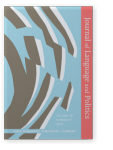What the Convention requires
Intertextual conduct in nation states’ non-binding agreements with the UN
How can conduct be enforced when governmental relations are entirely reliant on linguistic exchange? This is the question at stake in such jurisdictions as the United Nations when nations sign up to legally non-binding commitments. The few commentators in this area hold that non-enforceability gives states the upper hand in this relationship. The research reported here, however, challenges that conclusion. By looking at textual exchanges of reporting and assessment respectively between the New Zealand government and the Committee on the Rights of the Child over a twenty year period, this paper identifies the linguistic and rhetorical strategies by which each party attempts to orient the conduct of the other. The conclusion reached, which can still only be provisional, is that, through nothing other than unwavering reiteration of its mandate, the UN committee gradually exhausts the evasive and countering tactics of the state party to bring about a degree of compliance.
Article outline
- 1.Introduction
- 2.The specific case
- 3.Reader conducting strategies in the New Zealand government’s first periodic report
- 3.1Unqualified description
- 3.2Pre-empting
- 3.3Avoiding
- 3.4Defending
- 4.The committee’s first response
- 4.1Hierarchy of stock phrases
- 4.2Hedging
- 5.The New Zealand government’s second periodic report
- 5.1Strategy of possible compliance
- 5.2Strategy of expressing unlikelihood
- 5.3Strategy of preferment
- 6.The committee’s second response
- 7.The New Zealand government’s combined third and fourth reports
- 8.The committee’s third response
- 9.New Zealand’s fifth report
- 10.Concluding discussion
- Acknowledgements
-
References
References (24)
Bakhtin, Mikhail
1981 “
Discourse in the Novel”. In
The Dialogic Imagination, ed. by
Michael Holquist, 259–422. Austin: University of Texas Press.

Briggs, Charles L., and Richard Bauman
1992 “
Genre, Intertextuality, and Social Power”.
Journal of Linguistic Anthropology 2 (2): 131–172.


Bazerman, Charles
2009 “
Intertextuality: How Texts Rely on Other Texts”. In
What Writing Does and How it Does It: An Introduction to Analyzing Texts and Textual Practices, ed. by
Charles Bazerman and
Paul Prior: New York and London: Routledge.

Committee on the Rights of the Child
1991 General Guidelines Regarding the Form and Content of Initial Reports to be Submitted by States Parties under Article 44, Paragraph 1 (a), of the Convention. New York: United Nations.

Committee on the Rights of the Child
1997 Concluding Observations of the Committee of the Rights of the Child: New Zealand (
CRC/C/15/Add. 71). Geneva: United Nations.
[URL].
Committee on the Rights of the Child
2003 Concluding Observations of the Committee of the Rights of the Child: New Zealand (
CRC/C/15/Add. 216). Geneva: United Nations.
[URL].
Committee on the Rights of the Child
2011 Concluding Observations of the Committee of the Rights of the Child: New Zealand (
CRC/C?NZL/C0/3–4). Geneva: United Nations.
[URL].
Daiute, Colette
2008 “
The Rights of Children, the Rights of Nations: Developmental Theory and the Politics of Children’s Rights”.
Journal of Social Issues 64 (4): 701–723.


Essary, Elizabeth H., and Elena Theisner
2013 “
Monitoring World Society: The Convention on the Rights of the Child in Cameroon”.
International Journal of Politics, Culture, and Society 261: 305–322.


Fairclough, Norman
1992 “
Intertextuality in Critical Discourse Analysis”.
Linguistics and Education 41: 269–293.


Foucault, Michel
2007 Security, Territory, Population (Lectures at the Collège de France 1977–1978), ed. by
Michael Senellart. Basingstoke: Palgrave Macmillan.

Freadman, Anne
1994 “
Anyone for Tennis?” In
Genre and the New Rhetoric, ed. by
Aviva Freedman and
Peter Medway. London: Taylor & Francis.

Hammarberg, Thomas
2001 “
Searching the Truth: The Need to Monitor Human Rights with Relevant and Reliable Means”.
Statistical Journal of the United Nations Economic Commission for Europe 18 (2/3): 131–140.


Harn, Kristina, and Anna Holzscheiter
2013 “
The Ambivalence of Advocacy: Representation and Contestation in Global NGO Advocacy for Child Workers and Sex Workers”.
Global Society 27 (4): 497–520.


Kiersey, Rachel, and Nóirin Hayes
2010 “
Reporting the Rhetoric, Implementation of the United Nations Convention on the Rights of the Child as Represented in Ireland’s Second Report to the UN Committee on the Rights of the Child: A Critical Discourse Analysis”.
Child Care in Practice 16 (4): 327–346.


Krommendijk, Jasper
2015 “
The Domestic Effectiveness of International Human Rights Monitoring in Established Democracies. The case of the UN Human Rights Treaty Bodies”.
The Review of International Organisations 101: 489–512.


Liefaard, Ton, and Julia Sloth-Nielson
(eds.) 2016 The United Nations Convention on the Rights of the Child: Taking Stock after Twenty-five Years and Looking Ahead. Leiden: Brill.

Marsen, Sky
2004 “
To be an Actor or to be an Observer? Semiotic Typology of Narrator Roles in Written Discourse”.
Semiotica 1491: 223–243.

McIlvenny, Paul, Julia Zhukova Klausen and Laura Lindegaard
Ministry of Social Development
2015 Fifth Periodic Report to the Committee on the Rights of the Child, Wellington: New Zealand Government.
[URL].
Ministry of Social Development
2016 “
UNCROC Reporting”.
[URL]. Accessed 2 April 2016.
Ministry of Youth Affairs
1995 Initial Report to the Committee on the Rights of the Child. Wellington: New Zealand Government.
[URL].
Ministry of Youth Affairs
2001 Second Periodic Report to the Committee on the Rights of the Child. Wellington: New Zealand Government.
[URL].
Ministry of Youth Development
2008 Third and Fourth Periodic Reports to the Committee on the Rights of the Child. Wellington: New Zealand Government.
[URL].
Cited by (1)
Cited by 1 other publications
This list is based on CrossRef data as of 5 july 2024. Please note that it may not be complete. Sources presented here have been supplied by the respective publishers.
Any errors therein should be reported to them.
